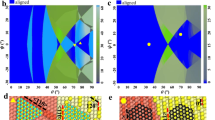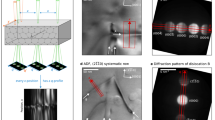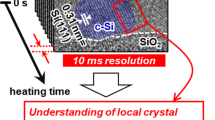Abstract
MANY substances are known to grow epitaxially when deposited on suitable single crystal substrates. A review of epitaxial growth has been given by Pashley1. The single-crystal film is of importance since its behaviour is easier to interpret than that of a polycrystalline film, in which both crystallite size and orientation are variable. Rock-salt crystal is frequently used as a substrate because the film can be easily removed from its surface by dissolving the underlying crystal. It is essential that the film be removed for study, in order that the strain associated with the epitaxial process be removed by annealing. Measurement of the thickness of such films raises a slight difficulty because a cleaved rock-salt surface, although flat over very small areas, is rarely flat enough to enable the usual multiple-beam fringe methods2 to be applied directly.
This is a preview of subscription content, access via your institution
Access options
Subscribe to this journal
Receive 51 print issues and online access
$199.00 per year
only $3.90 per issue
Buy this article
- Purchase on SpringerLink
- Instant access to full article PDF
Prices may be subject to local taxes which are calculated during checkout
Similar content being viewed by others
References
Pashley, D. W., Phil. Mag., Supp. No. 5, 18, 17 (1955).
Tolansky, S., “Multiple-Beam Interferometry” (Oxford Univ. Press, 1948).
Author information
Authors and Affiliations
Rights and permissions
About this article
Cite this article
HEAVENS, O., PANDEYA, D. Thickness Measurement of Epitaxially Grown Films. Nature 181, 1394 (1958). https://doi.org/10.1038/1811394a0
Issue date:
DOI: https://doi.org/10.1038/1811394a0



